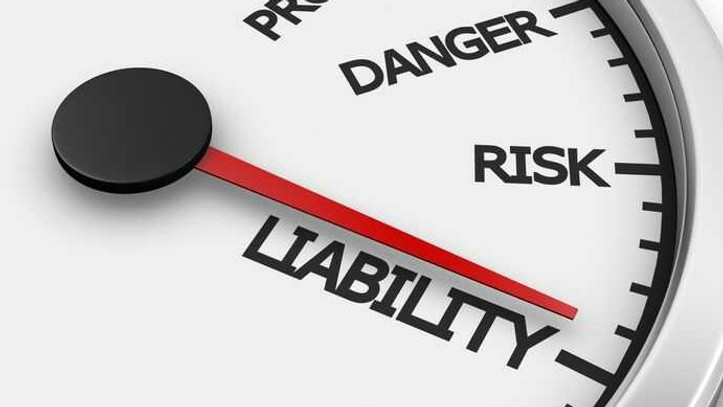During the backtesting phase of your trading strategy development and optimization, you must deploy a means to gauge your level of risk exposure.
To do this, here are some risk management terminologies you must acquaint yourself with:
Drawdown, Maximal Relative Drawdown, Leverage, Account Lifespan, Maximal Rate of Deposit Utilization rate.
If you've ever played chess, you'll understand that the white pieces get a half-pawn advantage for making the first move. The same idea applies when trading different asset classes.
The market is white and has a mathematical edge, as illustrated in the table below.
The higher the loss in percent on your trading account, the higher the profit in percent required to get back to breakeven.
Initial Capital Loss Remains Profit Required to Break Even
- 100% 10% 90% 11.11%
- 100% 20% 80% 25.00%
- 100% 30% 70% 42.86%
- 100% 40% 60% 66.67%
- 100% 50% 50% 100.00%
- 100% 60% 40% 150.00%
- 100% 70% 30% 233.33%
- 100% 80% 20% 400.00%
- 100% 90% 10% 900.00%
Here is why you have to put great thoughts into your entry-exit methodology and understand how risk management works irrespective of your chosen trading.
Drawdown
The drawdown on a trading account is the difference between a given peak and trough, divided by a summation of the peak and 100, calculated in percentage term.
The Relative Drawdown, however, is the highest of the different percentage drawdowns.
An example:
Let's assume four different levels of drawdown on a given account, where the peak is "H" for High, and the Trough is "L" for Low.
H1 = 80%, L1= 50%;
H2 = 90%, L2 = 35%;
H3 = 135%, L3 = 40%;
H4= 195%, L4 = 65%.
The Maximum Relative drawdown value is the highest of the individual relative drawdowns as shown below:
PercentDrawDown1 = (H1 - L1) / (H1 + 100) * 100 = (80 - 50) / (80 + 100) х 100 = 16.67%
PercentDrawDown2 = (H2 - L2) / (H2 + 100) * 100 = (90 - 35) / (90 + 100) х 100 = 28.95%
PercentDrawDown3 = (H3 - L3) / (H3 + 100) * 100 = (135 - 40) / (135 + 100) х 100 = 40.43%
PercentDrawDown4 = (H4 - L4) / (H4 + 100) * 100 = (195 - 65) / (195 + 100) х 100 = 44.07%
Maximum Relative Drawdown = 44.07%
Risk Ratio
The trade risk is calculated from the trade history using varied weights and points on indicators such as maximal relative drawdown with a weight factor of 0.5, Maximum deposit utilization rate with a weight factor of 0.3, Leverage with a weight factor of 0.1 and Account lifespan with a weight factor of 0.1.
1. Maximal relative drawdown (weight factor 0.5)
Maximal relative drawdown (%) Points
- 100% 10% 90% 11.11%
- 100% 20% 80% 25.00%
- 100% 30% 70% 42.86%
- 100% 40% 60% 66.67%
- 100% 50% 50% 100.00%
- 100% 60% 40% 150.00%
- 100% 70% 30% 233.33%
- 100% 80% 20% 400.00%
- 100% 90% 10% 900.00%
2. Maximal deposit utilization rate (weight factor 0.3)
Maximal deposit utilization rate (%) Points
- 100% 10% 90% 11.11%
- 100% 20% 80% 25.00%
- 100% 30% 70% 42.86%
- 100% 40% 60% 66.67%
- 100% 50% 50% 100.00%
- 100% 60% 40% 150.00%
- 100% 70% 30% 233.33%
- 100% 80% 20% 400.00%
- 100% 90% 10% 900.00%
3. Leverage (weight factor 0.1)
- 100% 10% 90% 11.11%
- 100% 20% 80% 25.00%
- 100% 30% 70% 42.86%
- 100% 40% 60% 66.67%
- 100% 50% 50% 100.00%
- 100% 60% 40% 150.00%
- 100% 70% 30% 233.33%
- 100% 80% 20% 400.00%
- 100% 90% 10% 900.00%
4. Account lifespan (weight factor 0.1)
The set value is 10 points.
Let's consider a trading account with a hypothetical Maximal relative drawdown of 22.5%, which is at 5 points on the Max relative drawdown table, the maximal Deposit Utilization rate of 11.32% at 3 points, followed by Leverage of 1:400 at 10 points and Account Life span at 10 points.
By substituting the variables in the formula:
Risk = Points of Maximal relative drawdown * 0.5 + Points of Maximal deposit utilization rate * 0.3 + Points of Leverage * 0.1 + Points of Account lifespan * 0.1.
We get:
Risk = 5 * 0.5 + 3 * 0.3 + 10 * 0.1 + 10 * 0.1 = 5.4 ≈ 5
The Risk level for such account is approximately "5".
A trading account with a Risk level higher than five is considered too risky.
The trader should consider reevaluating any of your trade entry-exit strategy or the parameters highlighted on the above tables.
Doing this by hand can be rigorous; however, if you have some programming knowledge or basic excel scripting, you can get it done on a spreadsheet.
Paying attention to the tables will keep you on the right path towards being a successful trader.
Conclusion
Most traders understand the importance of risk management. However, their inability to measure risk makes them forget about it altogether.
The above method should serve as a framework that'll enable a trader to know when their trading account is going out of safe waters.





